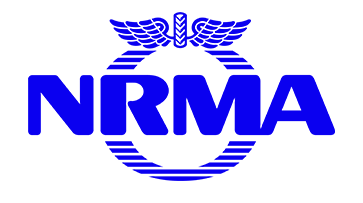Street Smart
Road Safety: Staying Safe – SchoolsSCHOOL FLASHING LIGHTS FAQs
Frequently asked questions
- When will my school receive flashing lights?
- Why is the government installing more cost-effective flashing lights?
- Will the new cheaper technology compromise safety?
- How do flashing lights improve road safety?
- Where are flashing lights installed?
- Why do some schools have more than one set of flashing lights?
- How safe are the streets surrounding schools that do not have flashing lights?
- Why are flashing lights installed on low speed roads?
- My school is remote and has little traffic. Should this resource go to a larger school?
- Why do flashing lights operate on pupil free days?
- Why hasn’t my school received flashing lights?
1. When will my school receive flashing lights?
All eligible schools will receive a set of flashing lights by the end of 2015. Roads and Maritime services will notify schools when flashing lights are to be installed.
Our School zone flashing lights rollout, 2014-2015 document (PDF, 36 Kb) shows when flashing lights will be installed in each local government area. All schools without flashing lights will receive new lights. These schools have been contacted by Roads and Maritime Services to identify where the lights will be installed.
To speed up the process, flashing lights will be installed in metropolitan and regional areas at the same time.
2. Why is the government installing cost-effective flashing lights?
By reducing the cost, school zone flashing lights can be installed at every school across NSW. More than 1500 schools that would have missed out under the previous program will now receive flashing lights.
3. Will the new cheaper technology compromise safety?
No. The signs effectively reduce vehicle speeds outside schools during 40 km/h school speed zones. Although the new model does not have a lit ring around the speed limit, all flashing light signs have a fluorescent panel across the top with flashing lanterns on either side of the words SCHOOL ZONE. All school zone signs show school zone hours and the speed limit.
The new signs have essential safety features including flashing wig-wag lights and back-to-base technology for maintenance and remote adjustment of lights.
4. How do flashing lights improve road safety?
School zone flashing lights alert drivers that they are entering a 40 km/h school zone and that they should slow down. Travelling at 40 km/h reduces the risk of a crash and the severity of a crash if it occurs.
Our research shows that flashing lights help reduce vehicle speeds outside schools during the 40 km/h school speed zones.
School zone flashing lights improve the road safety benefits of 40 km/h school zones, which have reduced school age pedestrian injuries and deaths.
5. Where are flashing lights installed?
Flashing lights will be retrofitted to existing school zone signs, in the school zone that covers the main school entry point. Roads and Maritime Services has worked with schools to ensure that flashing lights are installed where their road safety benefits are maximised.
6. Why do some schools have more than one set of flashing lights?
Some school have more than one set of lights because they have high risk school zones. A risk model considered factors such as the speed limit, vehicle and pedestrian volumes, lane numbers, sight distance and the type of pedestrian facilities at the school. Now that higher risk roads have received flashing lights, the program will deliver flashing lights to the remaining schools around the state.
7. How safe are the streets surrounding schools that do not have flashing lights?
Flashing lights are one safety measure among many used in NSW to improve the safety of children around school zones. All school zones are marked by school zone signs, ‘dragon’s teeth’ and painted ‘40’ pavement markings to improve the visibility of school zones to drivers.
Other safety measures include pedestrian crossings, pedestrian fencing, pedestrian footbridges and pedestrian refuges, which provide extra protection for pedestrians.
Safety measures depend on the school road environment and are installed on a case-by-case basis. Roads and Maritime Services works closely with school communities to ensure that school zones are clearly visible to motorists and to reduce risks to students travelling to and from school.
8. Why are flashing lights installed on low speed roads?
About two-thirds of all NSW schools are on 50 km/h local roads. The government’s commitment to put flashing lights at all schools will mean more sets are installed on local roads than on high speed roads.
9. My school is remote and has little traffic. Should this resource go to a larger school?
The school zone flashing lights program extends the benefits of flashing lights to all schools. School zone flashing lights warn drivers when they enter a 40 km/h school. Slower moving vehicles reduce the risk and severity of crashes. Our research shows that flashing lights reduce vehicle speeds outside schools during 40 km/h school speed zones.
10. Why do flashing lights operate on pupil free days?
School zone flashing lights are programmed to operate during school zone hours on NSW Government gazetted school days. With school development days, or ‘pupil free’ days, held during gazetted school days, government schools must accept students on these days. The Department of Education and Communities advises that school development days may differ between schools.
There are many roads where school zones are shared by government and non-government schools. Term dates may differ, as non-government schools may operate outside gazetted school dates.
By consistently operating flashing lights on gazetted school days and times across the state there is less confusion for motorists, who are more likely to comply with the speed limits.
School term information is also available on the Department of Education and Communities website. School term information is also advertised in the press and on radio.
11. Why hasn’t my school received flashing lights?
It will take until December 2015 to install flashing lights at the 1500 schools waiting for the rollout. To speed up the process, flashing lights will be installed in metropolitan and regional areas at the same time.
Roads and Maritime Services works with schools to ensure that school zones are clearly visible to motorists and reduce risks for students travelling to and from school.







